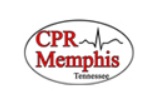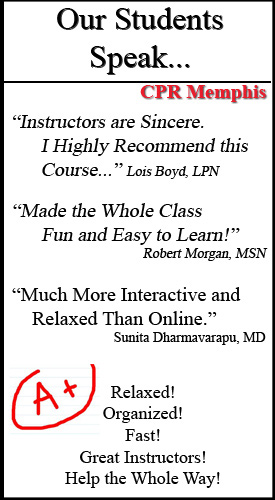Spinal Muscular Atrophy by Loretta Hughes
Call Us Now
Get the Best CPR Class in Memphis Today!
Spinal muscular atrophy (SMA) is a degenerative disease that is the number one genetic killer among infants and toddlers; and one in every fifty people are carriers of the disease. SMA causes muscles to weaken because of a loss of motor neurons. Many activities are affected by the muscles wasting away, including the ability to craw, walk, sit and control head movement. In severe cases even difficulty breathing and swallowing are affected.
SMA is usually diagnosed with a blood test, looking for the SMN1 and SMN2 genes (SMN1 (survival motor neuron 1) is the primary disease causing gene), and a physical examination. If the gene is not missing but mutated then a muscle biopsy or an EMG may be used. EMG testing is used to determine if there is another disorder of the nerves or the muscles that can mimic SMA. EMG testing consists of electrodes inserted into the patient’s muscles and recording pattern of electrical stimulus. There is no treatment to reverse or stop the progression of the disease. At this time there is no cure: only interventions.
SMA affects 1 in 6,000 people, from infants to adults, female and male, black or white. The disease is an autosomal recessive disease that can affect people in early childhood and adulthood. Type 0/1 affects infants between 0 and 6 months; sometimes even before birth by the reduction in fetal movement. This severe form is usually quick and unexpected. Rapid motor neuron death causes the organs especially the respiratory system and pneumonia-induced respiratory failure is the most frequent form of death. Type 2 is an intermediate form that occurs between 6 and 18 months. These children can never stand or walk but they can sit. Body muscles are weak and the respiratory system is affected. Type 3 happens after the person is past 18 months. This juvenile form usually causes the person to lose their ability to walk and respiratory system involvement is less noticeable. Type 4 is an adult onset form. This form usually affects a person in their third decade of life with a gradual weakening of muscles making the person wheelchair bound. Symptoms vary greatly within these stages of severities. What makes this a dangerous disease is that so many people are carriers of the disease ad there is no way to prepare for the onset of the disease, prenatal screening is controversial because of cost; even population screening is not cost-effective.
Yet, with these symptoms there are many costs for interventions used to make the life of a person better. Orthopedic care includes walkers, braces, and eventually wheelchairs. The one most affected is respiratory care. It might include a pulse oximeter, a suction machine, and a cough assist machine. The nutritional care may include a nasigastric (NG) tube, gastrostomy (G) tube, and/or Nissen fundoplication (stomach wrap); which are all invasive types of care.
Because there being no cure for SMA, many therapies are being considered. Gene therapy intends on correcting the SMN1 gene function and increase the SMN protein production. This method has the greatest increase in survival rate. Stem cell therapy’s objective is to inject human stem cell into the spinal cord which will develop into neuronal cells and then be able to code for the full-length SMN protein. Also, research into activating the SMN2 gene which increases its SMN2 protein output shows an unclear outcome. Other SMN2 research includes splicing the SMN2 gene or anti-sense technology, to achieve a higher amount of full-length transcriptions and stabilizing the SMN protein so that it is able to maintain neuron cells. A spin-off of SMN stabilization is nueuroprotection; which tries to keep the neuron cells alive even with low amounts of SMN protein. SMA-MAP’s are providing bio markers that help with development of new treatments. Factors that keep the research going include more available funding and the diversity of approaches being taken to develop new treatments. More programs are in clinical trials now and there is a growing number of therapeutic programs in various research stages.
Call Us Now
Get the Best CPR Class in Memphis Today!
References
SMA Foundation [Home]-2012-<http://smafoundation.org/>
Spinal Muscular Atrophy-genetics Home Reference- 2009-<http://ghr.nlm.nih.gov/condition/spinal_muscular_atrophy/>
Spinal Muscular Atrophy- Families of SMA- Research, Support, Hope- 2112-<http://fsma.org/>
Spinal Muscular Atrophy- Wikipedia, the free encyclopedia-<http://en.wikipedia.org/wiki/spinal_muscular_atrophy>









